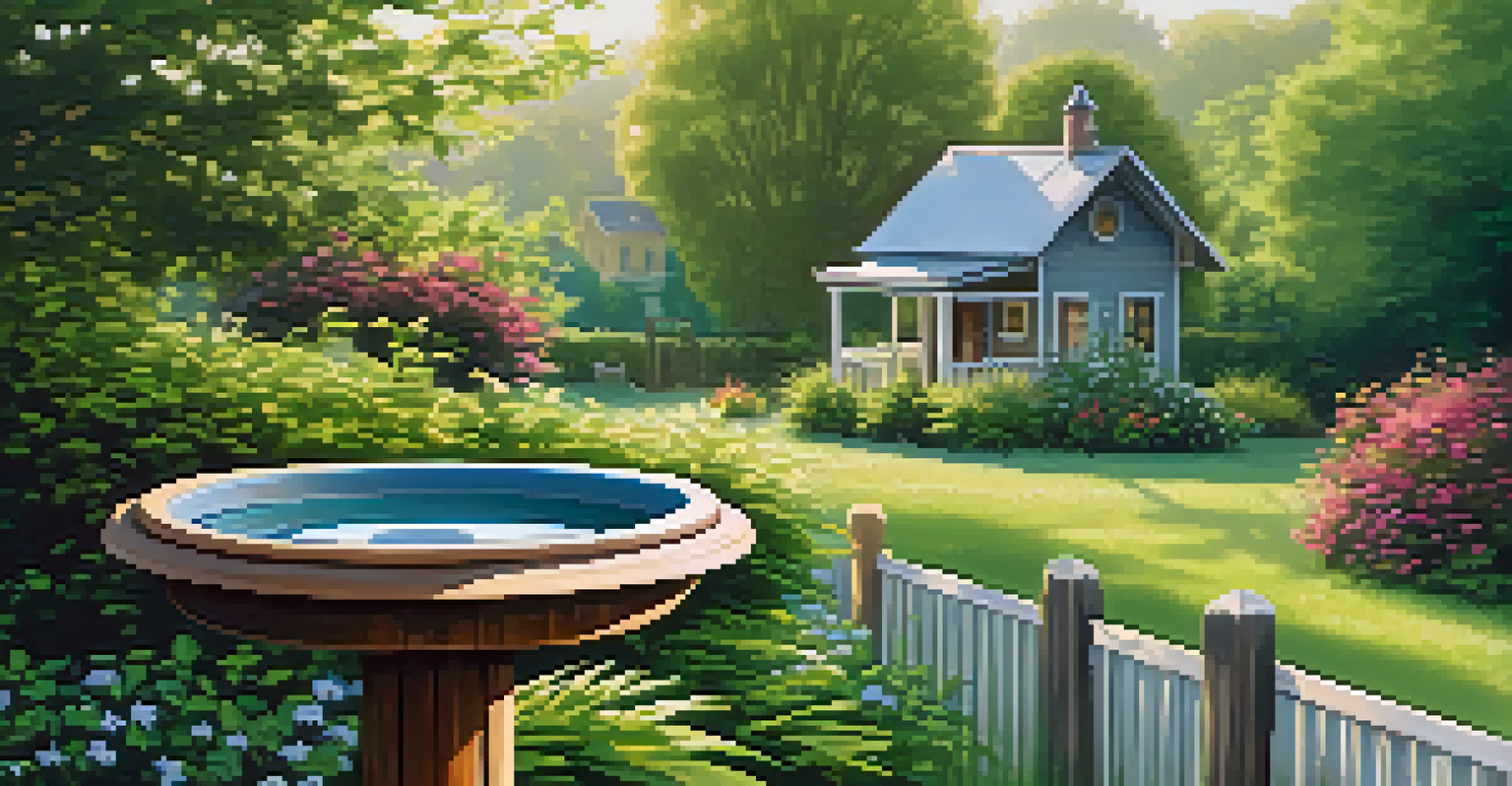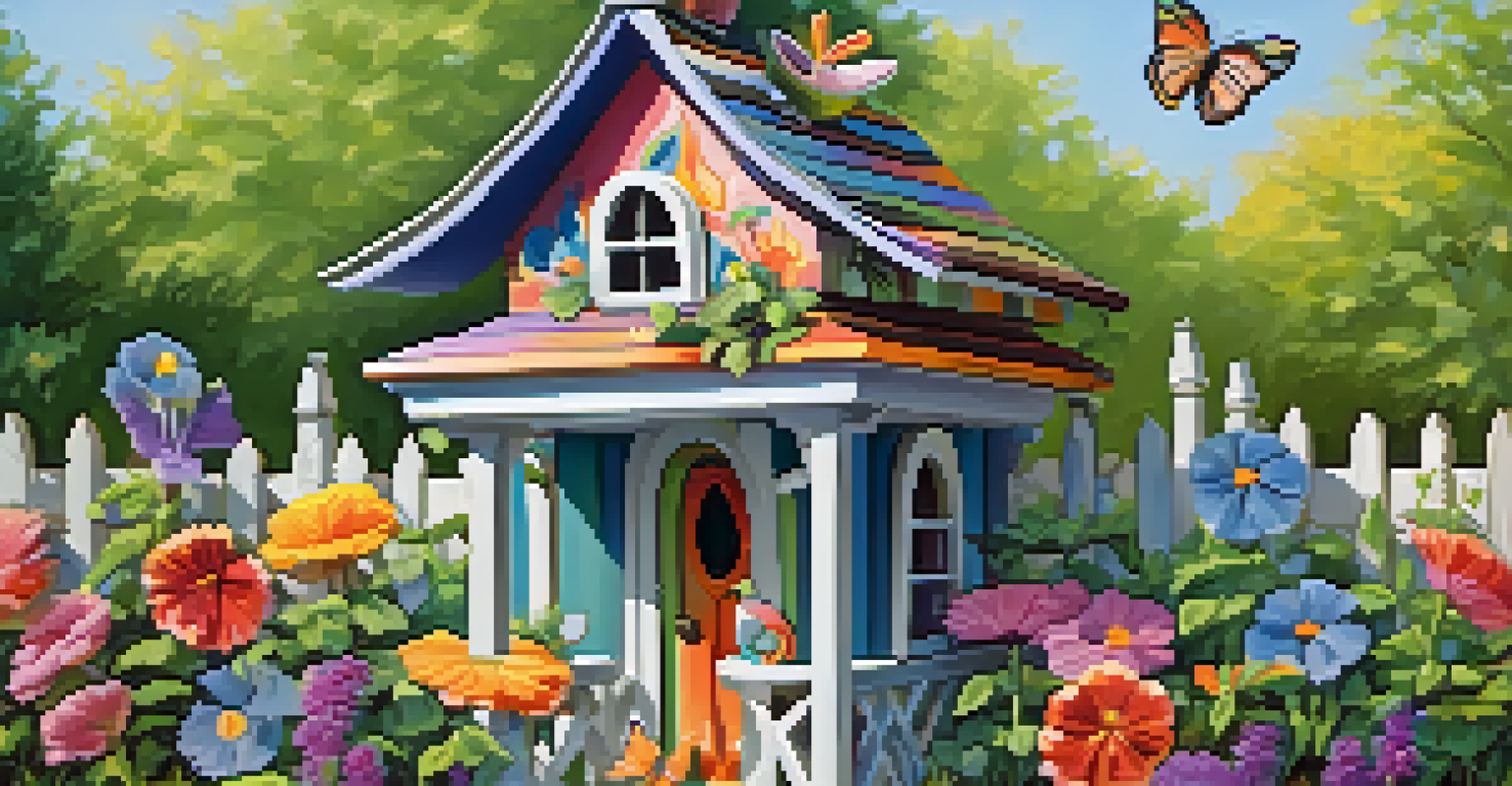Integrating Birdhouses into Garden Spaces: A Complete Guide

Understanding the Benefits of Birdhouses in Your Garden
Birdhouses provide a safe haven for many species of birds, adding life and color to your garden. They attract beneficial wildlife, which can help pollinate plants and control pests naturally. Beyond their ecological benefits, birdhouses can also serve as a charming focal point in your outdoor space.
If you build it, they will come.
Imagine sitting in your backyard, sipping tea while colorful birds flit about, chirping merrily. This peaceful scene can easily become your everyday reality with strategically placed birdhouses. By integrating these structures into your garden, you create a vibrant and dynamic environment that supports local biodiversity.
Additionally, birdhouses can be a wonderful educational tool for children and adults alike. Observing birds as they build nests and raise their young can spark curiosity about nature and inspire a deeper appreciation for wildlife.
Choosing the Right Location for Your Birdhouses
Finding the perfect spot for your birdhouse is crucial for attracting residents. Ideally, birdhouses should be placed in areas that offer some shelter from harsh weather and predators. Look for locations near trees or shrubs, which provide natural cover and make birds feel secure.

Consider the direction of the sun and prevailing winds when selecting a location. Placing a birdhouse facing away from harsh winds and direct afternoon sun can create a comfortable environment for nesting birds. Remember, your goal is to provide a safe and inviting space for them to thrive.
Birdhouses Enhance Garden Biodiversity
Incorporating birdhouses attracts various bird species, enriching your garden's ecosystem and providing natural pest control.
It’s also important to think about accessibility. Birdhouses should be easy to clean and monitor, so make sure they are positioned where you can reach them without much hassle. This not only helps you maintain the birdhouse but also allows you to enjoy birdwatching up close.
Selecting the Right Type of Birdhouse for Your Garden
Not all birdhouses are created equal! Different bird species have specific requirements when it comes to nesting sites. Research the types of birds native to your area and choose birdhouses that cater to their needs, whether it’s size, entrance hole diameter, or interior space.
A bird does not sing because it has an answer. It sings because it has a song.
For example, bluebirds prefer houses with a hole diameter of 1.5 inches, while wrens like smaller openings. By selecting the right type of birdhouse, you increase the chance of attracting these beautiful birds to your garden. It’s all about catering to their preferences!
Additionally, consider the materials used in your birdhouse. Cedar and pine are excellent choices for their durability and insulation properties. Avoid using treated wood, as the chemicals can be harmful to birds, ensuring that your birdhouses are both safe and functional.
Designing Birdhouses to Complement Your Garden Aesthetic
Birdhouses can be practical and stylish. When integrating them into your garden, think about how their design can enhance your outdoor space. Choose colors and styles that harmonize with your garden's theme, whether it’s rustic, modern, or whimsical.
For instance, a brightly painted birdhouse can add a pop of color to a flower garden, drawing the eye and adding to the overall charm. Conversely, a wooden birdhouse with a natural finish can blend seamlessly into a wooded area, maintaining a more organic look.
Choosing the Right Birdhouse Matters
Selecting birdhouses tailored to local bird species' needs increases the likelihood of attracting them to your garden.
Consider adding decorative elements like hanging planters or trellises nearby to create a cohesive design. This way, your birdhouses become an integrated part of your garden rather than just an afterthought.
Maintaining Birdhouses for Long-Term Use
Regular maintenance is key to ensuring your birdhouses remain safe and inviting for years to come. At the end of the nesting season, clean out old nesting materials to prevent the spread of disease. A simple scrub with soapy water can do wonders for hygiene.
Inspect the birdhouses for any damage or wear. Look for cracks, loose parts, or any signs of pests. Addressing these issues promptly not only keeps the birdhouses functional but also shows that you care about their residents' well-being.
Additionally, consider adding a fresh coat of non-toxic paint or sealer to protect the wood from the elements. This will help prolong the life of your birdhouses and keep them looking beautiful in your garden.
Creating a Bird-Friendly Garden Environment
Integrating birdhouses into your garden is just the beginning! To create a truly bird-friendly environment, consider adding native plants that produce seeds and berries. These can provide essential food sources for your feathered friends.
Water sources are equally important. A simple birdbath can offer birds a place to drink and bathe, attracting even more species to your garden. Ensure the water is clean and refreshed regularly to maintain its appeal.
Maintain Birdhouses for Longevity
Regular maintenance, including cleaning and repairs, ensures birdhouses remain safe and inviting for future avian visitors.
Finally, minimize chemical use in your garden. Pesticides and herbicides can harm birds and their food sources. By adopting organic gardening practices, you not only protect your avian visitors but also contribute to a healthier ecosystem.
Engaging with Local Birdwatching Communities
Joining local birdwatching groups can enrich your experience of integrating birdhouses into your garden. These communities often share valuable insights about local bird species and best practices for attracting them. Plus, they can provide support and inspiration for your gardening efforts.
Participating in community events, such as bird counts or garden tours, can deepen your appreciation for the natural world. These gatherings are a fantastic opportunity to connect with like-minded individuals who share your passion for birds and gardening.

Don’t hesitate to share your own experiences as well! Document your birdhouse journey on social media or community forums. This not only helps others learn but also fosters a sense of community among bird lovers.